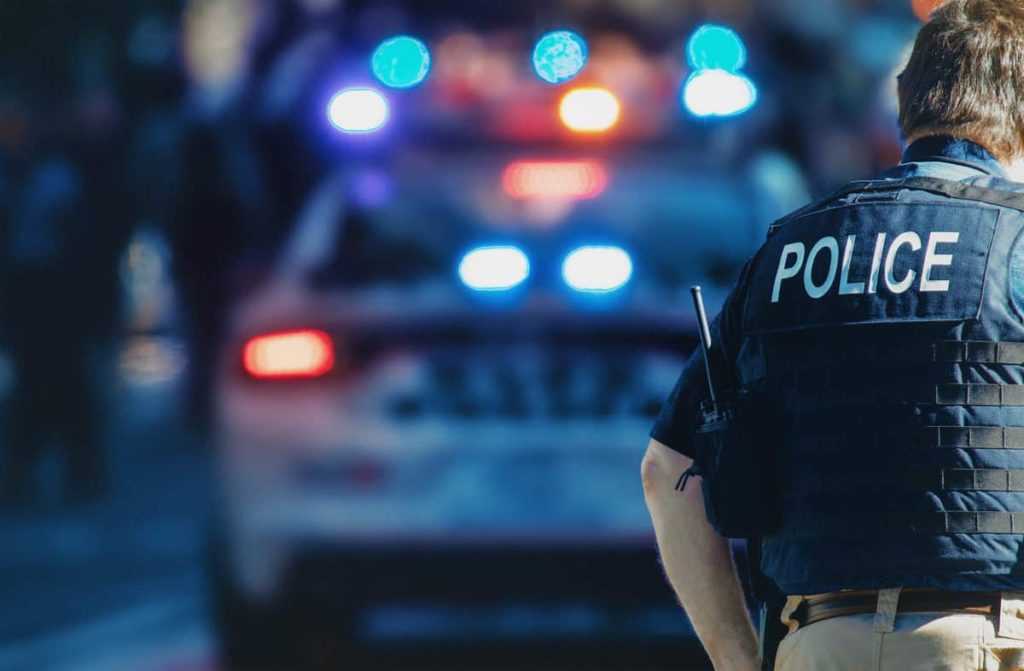After Uvalde, what kind of police do Americans really want?

Manhattan 2019. Behind the police with gun belt, close up
In the aftermath of the tragic active shooter incident in Uvalde, Texas, where 19 children and two teachers were murdered, many are raising questions about police response following video footage of distraught parents pleading with police to charge into the elementary school. Reports indicate that the shooter was present in the school for at least 40 minutes before responding police shot and killed him.
Research on active shooters shows that Immediate Action/Rapid Deployment (IA/RD), a tactic by which law enforcement officers enter the area to engage and stop the threat before establishing a perimeter or reaching a critical mass, reduces (but by no means eliminates) casualties from mass shootings. This doctrine typically calls for the first arriving officers (the contact officer or team) to make an immediate solo entry and actively begin hunting the perpetrator.
In early reports, police officials said that the first officer on the scene did “immediately” follow the suspect, Salvador Ramos, into the school at which time gunfire was exchanged, but the perpetrator reportedly barricaded himself inside a classroom. An incident timeline provided by police suggests that the first responding officers were effectively suppressed by gunfire from the perpetrator, and fell back, at which point the gunman was able to enter the classroom, and “the carnage began.”
Police then had difficulty breaching the classroom door, which further delayed their response. Border Patrol BORTAC agents, an elite federal law enforcement unit that previously made news for its role in the defense of the Mark O. Hatfield federal building against violent rioters in Portland, eventually breached the classroom and killed the suspect.
As we wait for more information about the specifics of this attack to emerge, everyone can agree the frustration and anger of the parents are completely understandable.
But stepping back from the specifics of this incident, we are reminded of Americans’ deep ambivalence and internal contradictions about policing.
Americans often say they want community policing, emphasizing de-escalation and outreach over proactive crime reduction and assertive policing. Many also oppose what they see as the “militarization” of police, rejecting the notion that American law enforcement should procure and train with tools such as sniper rifles and bullet-proof vests, let alone other more specialized equipment.
America in recent years has suffered a wave of anti-policing rhetoric, with the “Ferguson effect” beginning in 2014 and reaching a crescendo in the riots of 2020. Some radicals seek to defund them altogether.
But when an incident like Uvalde occurs, the public expects members of law enforcement to conduct what even America’s most elite special operations forces consider among the most challenging tactical tasks: a solo dynamic entry, room clearance, and structure search against a heavily armed perpetrator or perpetrators.
And the public is right to ask for this.
But few agencies select officers based on ability and willingness to perform this extremely high-impact/low-probability mission. Few agencies train officers to the high levels of proficiency required. The reality is that most law enforcement agencies require only the minimally mandated firearms qualifications, and at standards that are insufficient to meet the level of the challenge, in the event the worst should happen. Only a select few officers seek outside training and acquire the right tools, often at their own expense, to make themselves ready, lest they be called and found wanting.
Beyond bureaucratic training requirements, the task requires a certain mindset, a comfort with aggression, and a drive not doled out to all people in equal measure.
There are around 700,000 sworn law enforcement officers in the United States. As much as it may pain us to admit it, not all of them will be warriors, a word that is overused in certain circles but nevertheless remains apt. And, of course, police work requires many other interpersonal skills and training, some of which are 180-degree opposite from the psychological traits required to storm into a room alone against a determined and heavily armed gunman.
As historian Victor Davis Hanson eloquently writes, America possesses a deep discomfort with those who truly epitomize the combat virtues. While America loves the action hero, we breathe a sigh of relief at the movie’s end not only because the villain has been dispatched, but also because the hero rides away.
If we are honest with ourselves, most Americans don’t want this type of highly capable and dangerous man (and most of them will be men) doing our policing. Not on the good days, when the sun is shining and the birds are chirping.
Presumably, there will be an investigation into the Uvalde shooting, as is appropriate. We should absolutely study what the officers there did right or wrong and see what can be learned. But there are no studies of doctrine or training requirements that will give us the kinds of men we need to perform these tasks. One of the earliest axioms of political philosophy is that a society’s guardians will be a reflection of that society and what it honors.
America will ultimately produce the kind of police it truly wants, one way or another.
- How Trump’s Antifa Terrorism Sanctions Could Throttle Its Global Support Network - November 29, 2025
- Terrorist Designation for Muslim Brotherhood a Huge Blow: Kyle Shideler - November 25, 2025
- Antifa groups designated as FTOs - November 17, 2025
